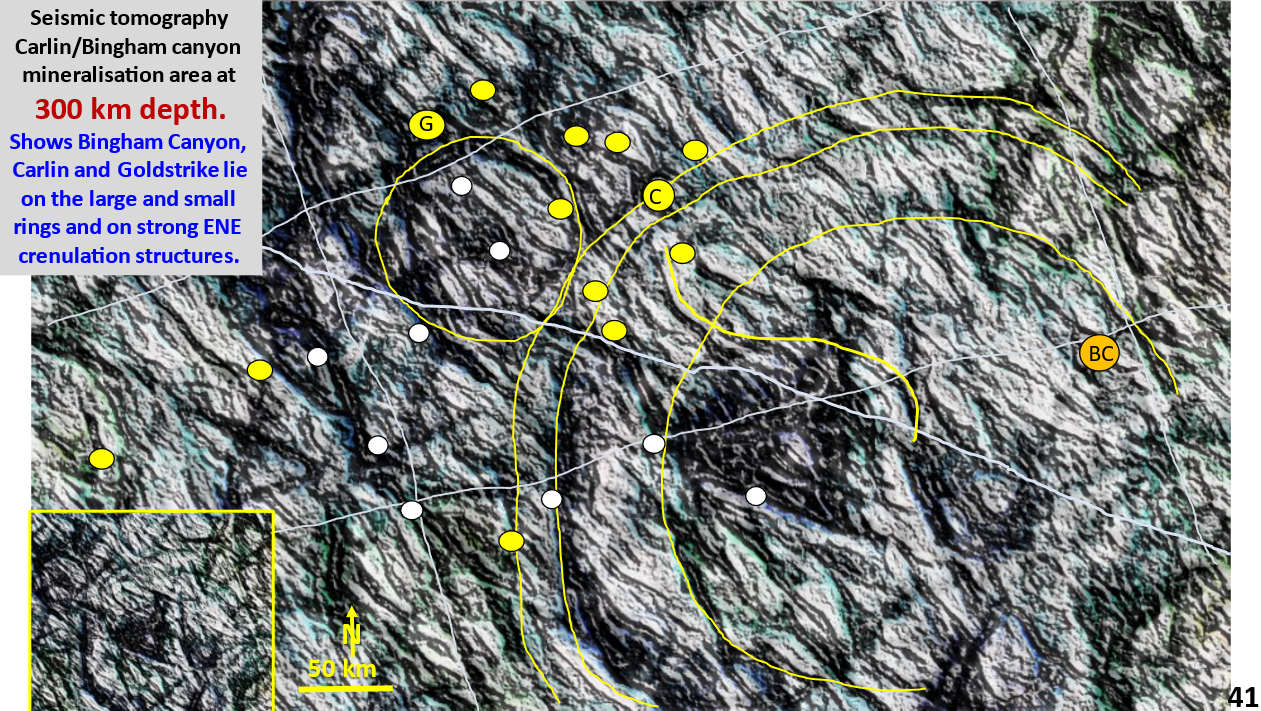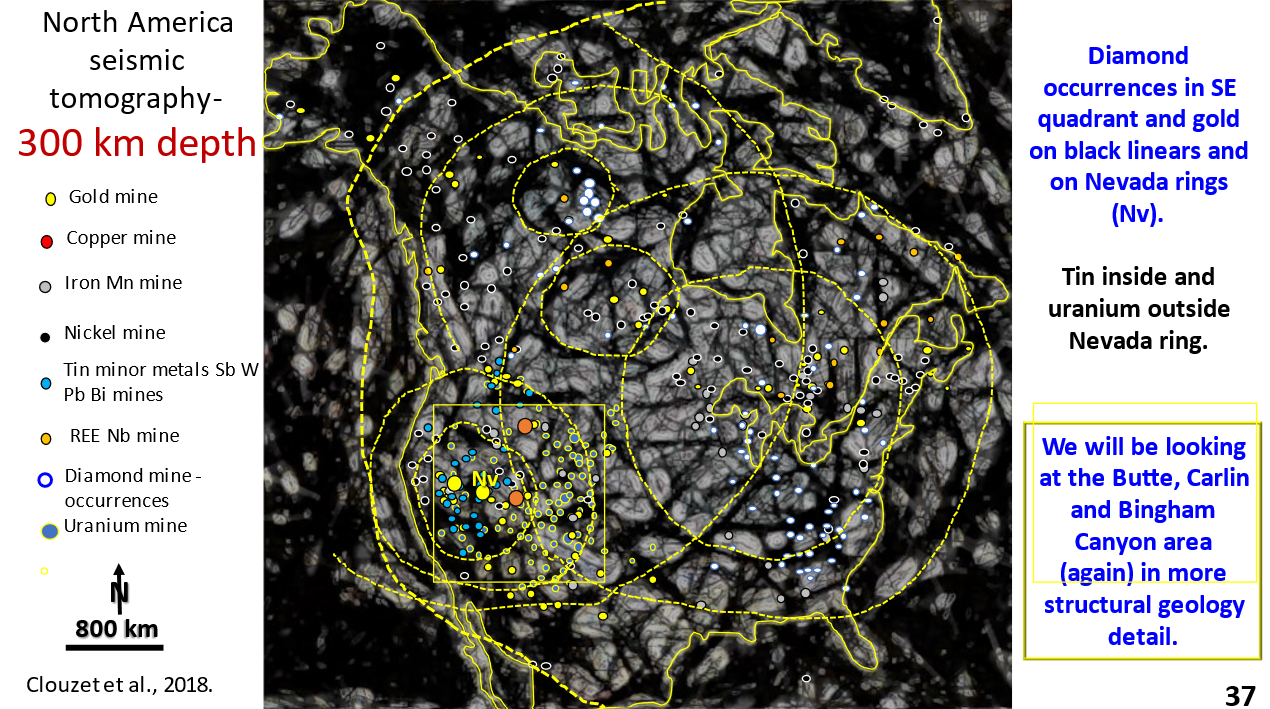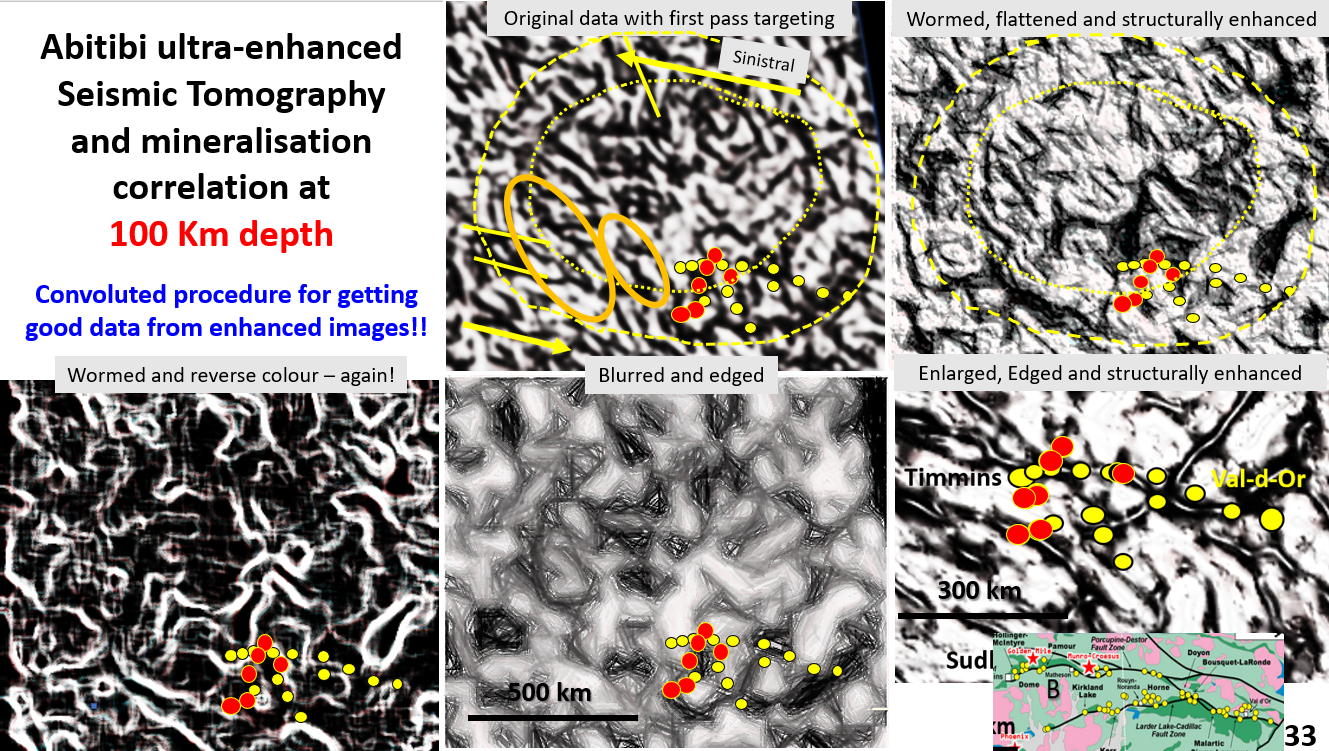Work
North America Formation and Mineralisation, AusIMM webinar part 6. Research using EagleEye enhancement showing structural geology from the surface to 2,850 km depth.
This is the EagleEye enhanced plan of the 300 km depth seismic tomography.
North American geology is still very brittle at 300 km depth. How can this be possible as we are supposed to be in the middle of the mobile upper mantle? There is a lot of detailed structural geology seen.
If by using this detailed structural geology we can crack why these huge mines are there and what structural geology they follow we will have an exploration plan for finding new fields, in this area and elsewhere in the world!



